Have you ever wondered why Persian cats are so playful? They seem to have boundless energy and always find a way to entertain themselves. In this article, we’ll dive into the topic of Persian cats and their playful nature. You’ll learn all about what makes these feline friends so lively and how to keep them entertained. Whether you’re a proud Persian cat owner or simply curious about these adorable creatures, this article will provide you with all the details you need to know.
Persian cats are known for their playful and mischievous personality. They have a curious nature that drives them to explore their surroundings and engage in various activities. From chasing toys to climbing high places, these cats always find a way to keep themselves entertained. In fact, their playfulness is one of the reasons why they make such great companions.
If you’re interested in finding out more about the playful nature of Persian cats, stay tuned for our upcoming article. We’ll delve deeper into their behaviors and provide you with tips on how to keep them entertained and mentally stimulated. So, whether you’re a current Persian cat owner or contemplating getting one, be prepared to learn all about their playful antics and how to make their lives even more exciting.
Persian Cats and Their Playful Nature
Persian cats are known for their stunning looks and luxurious coats, but they are not just a pretty face. These regal felines also possess a playful nature that adds a touch of whimsy to their majestic demeanor. In this article, we will delve into the playful side of Persian cats and explore how they interact with their environment and the people around them.
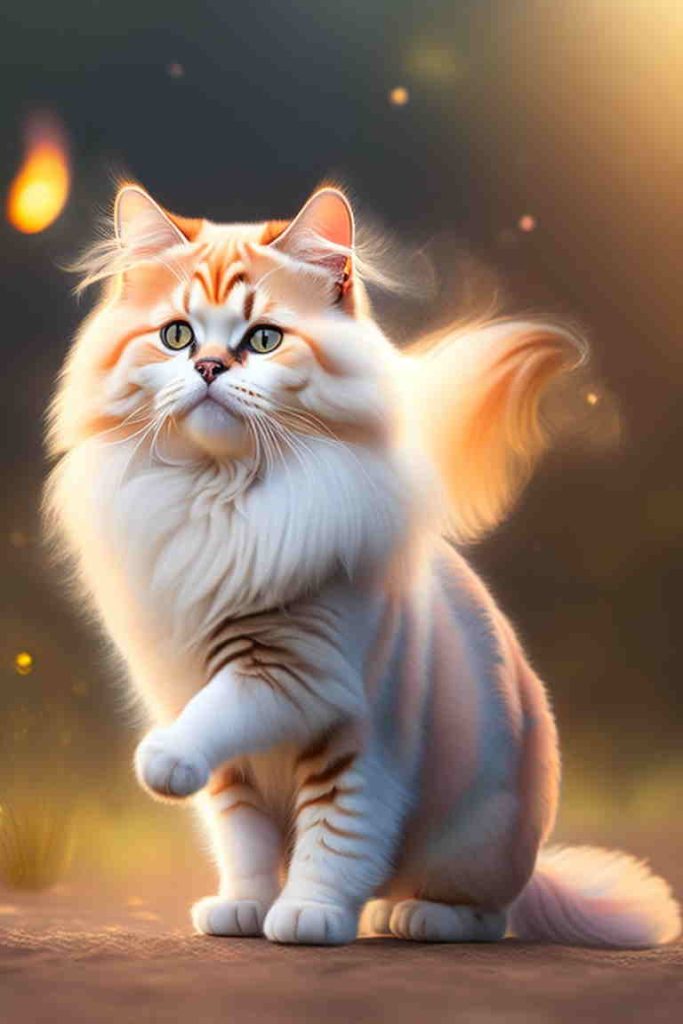
Origins of Persian Cats
Persian cats have a rich history that dates back to ancient Persia, which is now modern-day Iran. They were highly regarded and adored by nobility and aristocracy for centuries. These captivating felines gained popularity throughout the world, and their playful nature has remained a defining trait throughout their evolution.
Popularity of Persian Cats
Persian cats have long been regarded as one of the most popular cat breeds in the world. Their striking appearance and calm, affectionate nature have endeared them to cat enthusiasts from all walks of life. Whether you reside in a city apartment or a sprawling countryside home, the playful presence of a Persian cat will surely bring joy to your life.
Evolution of Persian Cats
Over the years, Persian cats have undergone slight changes in appearance due to selective breeding. While their playful nature has remained constant, breeders have worked to create distinct variations of the Persian cat, such as the Doll Face Persian and the Peke-Faced Persian. Despite these differences, their playful spirit shines through, captivating the hearts of cat lovers worldwide.
Distinctive Appearance
One cannot discuss Persian cats without mentioning their distinctive appearance. With their round faces, tiny ears, and large, expressive eyes, Persian cats possess an exquisite charm that is hard to resist. Their playful nature is reflected in their mischievous gaze and inquisitive expressions, which never fail to bring a smile to their owners’ faces.
Coat Types of Persian Cats
Persian cats are best known for their luxurious and silky coats. These felines boast a variety of coat types, including solid, shaded, smoke, parti-color, and tabby. Each coat type has its unique charm and adds to the overall allure of the Persian cat. Their coats require regular grooming to maintain their beauty, but this grooming process can also become a playful bonding experience between cat and owner.
Facial Features of Persian Cats
One of the most endearing aspects of Persian cats is their distinctive facial features. Their tiny, upturned noses, round cheeks, and expressive eyes create an irresistibly cute face. This unique facial structure often gives Persian cats a perpetually surprised or quizzical expression, which only adds to their charm and playfulness.
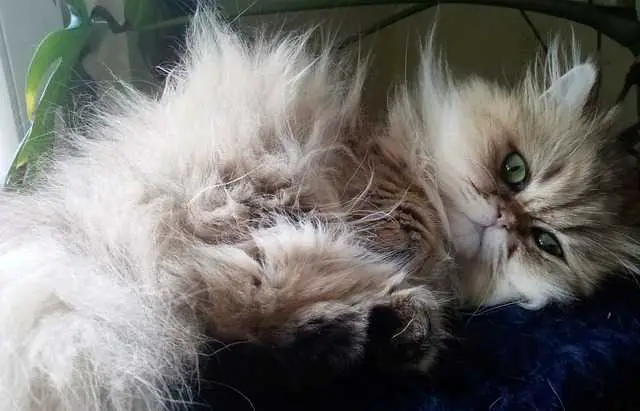
Gentle and Calm Nature
Persian cats have a reputation for being gentle and calm. Their playful nature is not characterized by high-energy antics but rather by a more refined and leisurely approach to play. They are happy to engage in low-intensity play like batting at a string or chasing a toy mouse. Their calm demeanor makes them ideal companions for people with a more relaxed lifestyle.
Playful Side of Persian Cats
While Persian cats may not be as rambunctious as some other cat breeds, they still possess a playful spirit. They enjoy interactive toys that stimulate their curiosity and engage their hunting instincts. Feather wands and laser pointers are popular toys that can provide hours of entertainment for both the Persian cat and their owner.
Interaction with Humans and Other Pets
Persian cats thrive on human interaction and enjoy spending time with their owners. They are known for their affectionate nature and will often seek out a gentle touch or a warm lap to curl up in. Persian cats also tend to get along well with other pets, making them a wonderful addition to multi-pet households. Their playful nature can create a harmonious and enjoyable dynamic among furry family members.
Proper Grooming Techniques
Due to their luxurious coats, Persian cats require regular grooming to keep their fur looking its best. Grooming sessions can be a playful and bonding experience for both cat and owner. Start with gentle brushing to remove any tangles or mats, and be sure to use a comb with wide teeth to prevent discomfort. Regular baths are also essential to keep their coats clean and healthy.
Nutritional Needs of Persian Cats
Persian cats have unique nutritional needs that should be met to ensure their overall well-being. A high-quality diet composed of balanced nutrients is vital for maintaining their luxurious coats and optimal health. It is essential to consult with your veterinarian to determine the best diet for your Persian cat and to discuss any specific dietary considerations based on their age, weight, and overall health.
Healthcare and Veterinary Considerations
Regular visits to the veterinarian are essential for the health and well-being of Persian cats. Routine check-ups, vaccinations, and preventive care can help detect and prevent any potential health issues. Dental hygiene is also crucial, as Persian cats are prone to dental problems. Playful activities that involve chewing, such as interactive toys or dental treats, can help promote good oral health.
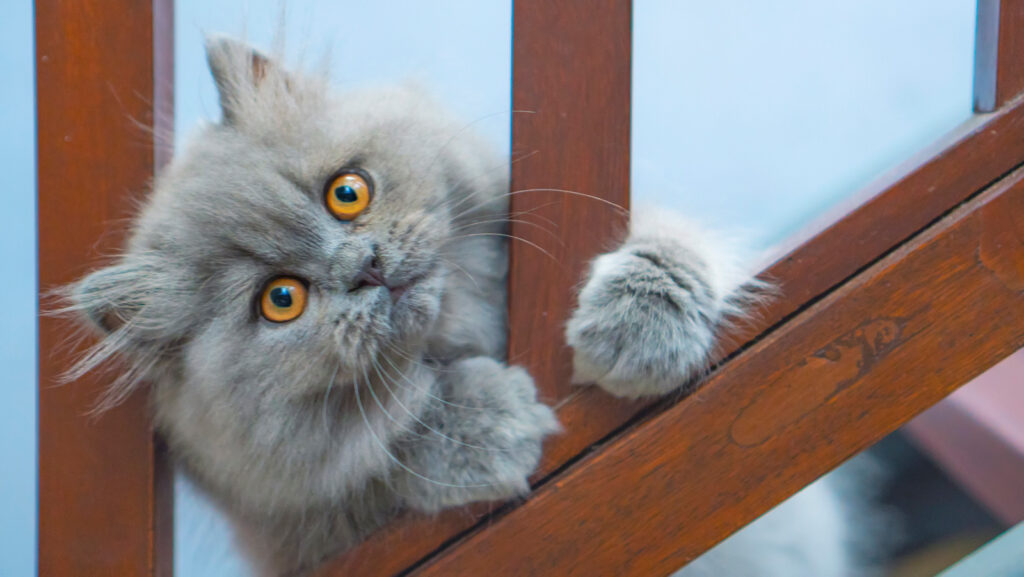
Litter Box Training
Litter box training is a fundamental aspect of caring for any cat, including Persian cats. These elegant felines are naturally clean and fastidious, making litter box training a relatively easy process. Provide a clean litter box in a quiet and accessible location, and your Persian cat will quickly learn to use it for their bathroom needs.
Teaching Basic Commands
Contrary to popular belief, Persian cats can learn basic commands and tricks. While they may not be as eager to please as some dog breeds, they can still be trained through positive reinforcement. Use treats and praise to reward desired behaviors, such as sitting, coming when called, or using scratching posts. Keep training sessions short and fun to maintain their interest and engagement.
Enriching Playtime Activities
Persian cats thrive on mental stimulation and benefit from engaging playtime activities. Interactive toys, treat puzzles, and scratching posts with attached toys can provide hours of entertainment. Experiment with different toys and activities to find what resonates with your Persian cat’s playful nature and keeps them entertained and happy.
Creating a Safe Environment
Creating a safe environment for your Persian cat is crucial to ensure their well-being and enjoyment. Remove any potential hazards, such as toxic plants, small objects that can be swallowed, or items that can cause injury. Provide sturdy and stable scratching posts for them to unleash their playful energy, and create comfortable resting spots where they can relax after a playful session.
Managing Allergies
While Persian cats are a delight to have around, they can trigger allergies in some individuals. If you or a family member are prone to allergies, there are measures you can take to manage them. Regular grooming to keep dander under control, using air purifiers, and maintaining a clean home environment can help minimize allergic reactions and allow you to enjoy the playful presence of your Persian cat.
Integrating Persian Cats into Family Life
Persian cats are known for their adaptability and can integrate seamlessly into family life. However, it is essential to introduce them gradually to new environments and family members. Provide a safe space where they can retreat when feeling overwhelmed, and allow them to approach new people and situations at their own pace. With patience and gentle encouragement, Persian cats can become cherished members of the family.
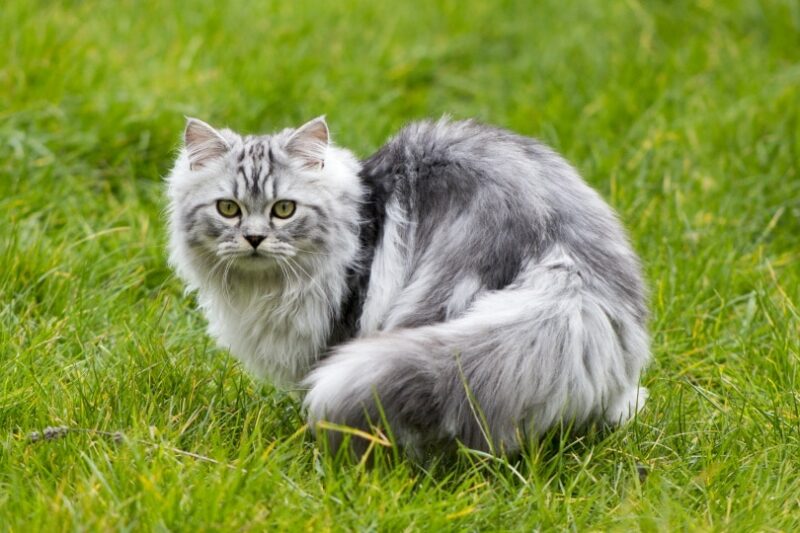
Bonding with Owners
Persian cats are incredibly affectionate and form deep bonds with their owners. They enjoy being in close proximity to their human companions and often seek out opportunities for physical contact and attention. Spend quality time with your Persian cat, engage in gentle play, and provide plenty of affection to strengthen the bond between you and your feline companion.
Understanding Social Hierarchy
While Persian cats may have a playful nature, they also have a sense of social hierarchy within their environment. They may display territorial behavior or establish dominance with other pets. It is essential to provide clear boundaries and establish yourself as the pack leader through consistent training and gentle but firm discipline, ensuring a harmonious and playful coexistence.
Communication and Body Language
Understanding your Persian cat’s communication and body language can deepen your connection and enhance your playtime interactions. Each cat has unique ways of expressing their needs and desires, such as meowing, purring, or using body postures. Pay attention to their signals and respond accordingly, allowing for more effective communication and a greater understanding of their playful nature.
Respiratory Problems
Unfortunately, Persian cats are prone to certain health issues, including respiratory problems. Their short nasal passages and flat faces can lead to difficulty breathing, especially in hot or humid environments. It is essential to monitor their breathing and provide a cool and well-ventilated space to prevent any respiratory distress. Regular veterinary check-ups can also help detect and manage any potential respiratory issues.
Eye Conditions
Persian cats have unique eye structures, which can make them more susceptible to eye conditions. Inherited conditions such as progressive retinal atrophy (PRA), which leads to vision loss, or excessive tearing due to blocked tear ducts, can occur in Persian cats. Regular eye care, including wiping away any discharge and routine veterinary examinations, can help prevent and manage these conditions.
Polycystic Kidney Disease (PKD)
Polycystic Kidney Disease (PKD) is a genetic disorder that can affect Persian cats. This condition causes the growth of cysts in the kidneys, leading to kidney dysfunction over time. Responsible breeders have worked to reduce the incidence of PKD through genetic testing and selective breeding. When considering a Persian cat as a pet, it is crucial to inquire about the breeder’s testing practices and ensure that the cat has been cleared of any genetic issues.
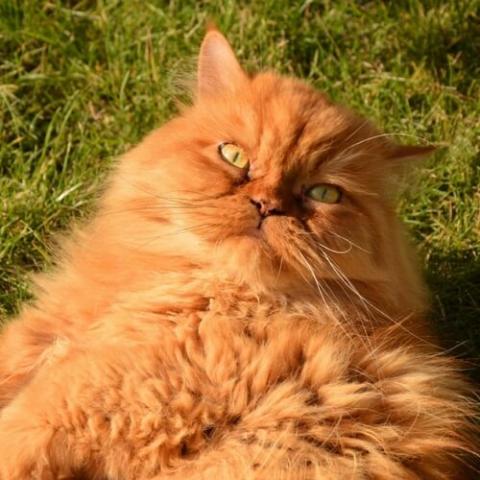
Breeding Standards
Breeding Persian cats adheres to specific standards set by cat breed associations. These standards detail the ideal physical characteristics, coat types, and colors for the Persian breed. Breeders aim to produce healthy and well-tempered cats that adhere to these standards. Responsible breeding practices can help maintain the overall health and well-being of Persian cats for future generations.
Color and Pattern Variations
Persian cats come in a wide array of colors and patterns, adding to their beauty and allure. From solid colors like white or black to stunning tabby patterns, there is a Persian cat to suit every individual’s taste. Each color and pattern variation has its unique charm, making the breed even more captivating and playful.
Genetic Considerations
Due to centuries of selective breeding, Persian cats are genetically predisposed to certain health issues. Responsible breeders work to minimize the risk of these issues through careful breeding practices and genetic testing. It is crucial to obtain your Persian cat from a reputable breeder who prioritizes the health and well-being of their cats.
Celebrity Persian Cats
Persian cats have often found themselves in the spotlight, becoming beloved pets of celebrities and public figures. From social media influencers to famous musicians, there have been numerous instances where Persian cats have stolen the limelight and become famous in their own right.
Persian Cats in Art and Literature
Persian cats have long been a favorite subject in art and literature. Their regal appearance and playful nature have inspired countless artists and writers throughout history. From classic paintings to modern-day illustrations, Persian cats continue to be a muse for creative minds.
Persian Cats in Movies and Television
Persian cats have also made their mark in the entertainment industry. They have graced the silver screen and small screen, captivating audiences with their enchanting presence. These playful felines have become iconic characters in movies and television shows, leaving a lasting impression on viewers.
Persian Cats and Intelligence
One common myth about Persian cats is that they are not as intelligent as other cat breeds. While Persian cats may not be as inclined to problem-solving or learning complex tricks, they are still intelligent creatures in their own right. They possess an innate curiosity and display their cleverness and playful nature in unique ways.
Persian Cats as High-Maintenance Pets
Another misconception about Persian cats is that they are high-maintenance pets. While it is true that their coats require regular grooming, Persian cats are generally low-energy and easy to care for. Their playful nature is often seen in more relaxed and leisurely play sessions, making them a great choice for individuals looking for a feline companion without the need for excessive activity or stimulation.
Persian Cats and Allergies
It is a common assumption that Persian cats are hypoallergenic. While no cat breed is truly hypoallergenic, some individuals with allergies may find that they have fewer allergic reactions to Persian cats. This is due to the fact that Persian cats produce fewer allergenic proteins in their saliva and skin than some other breeds. However, it is essential to spend time with a Persian cat before making a decision if you have allergies to ensure compatibility.
Persian Cats in Iran
Persian cats have a special place in the heart of Iranian culture. They are considered national treasures and have been depicted in ancient Persian art and literature for centuries. Persian cats are highly regarded and often associated with beauty, grace, and wisdom in Iranian folklore and poetry.
Persian Cats in Western Countries
Persian cats have been beloved pets in Western countries for centuries. They were introduced to Europe in the 16th century through trade routes and quickly became popular among nobility and the upper class. Today, Persian cats are cherished companions in homes across the globe, enriching the lives of their owners with their playful nature.
Symbolism of Persian Cats
Throughout history, Persian cats have been associated with various symbols and meanings. Their regal appearance and playful nature have made them symbols of grace, elegance, and prosperity. In some cultures, Persian cats are even believed to bring good luck and ward off evil spirits. Their presence in a home is believed to bring positive energy and tranquility.
Persian Cats and Emotional Support
Persian cats have a natural ability to provide emotional support and comfort to their owners. Their gentle and calm nature creates a soothing atmosphere, helping to reduce stress and anxiety. The playful interactions with a Persian cat can bring joy and lightness to everyday life, making them ideal therapy animals for individuals in need of emotional support.
Persian Cats in Nursing Homes
Therapy animals, including Persian cats, play a vital role in nursing homes and care facilities. Their presence brings comfort and companionship to residents, many of whom may be missing the companionship of pets. Persian cats’ playful nature and affectionate demeanor help brighten the daily lives of those in nursing homes and contribute to a sense of well-being.
Persian Cats in Rehabilitation Centers
Persian cats have also been employed as therapy animals in rehabilitation centers. The presence of these feline companions can provide motivation and inspiration for patients undergoing physical or emotional therapy. The playful nature of Persian cats can invoke a sense of joy and assist in the healing process, making them valuable additions to rehabilitation programs.
Conclusion
Persian cats are more than just beautiful cats with luxurious coats. Their playful nature brings an element of joy and whimsy to their regal presence. From their distinctive appearance and loving temperament to their interaction with humans and other pets, Persian cats make wonderful companions for individuals or families seeking a feline friend. Embrace their playful nature, provide them with a safe and stimulating environment, and enjoy the endless joy and entertainment that Persian cats bring into your life.
Frequently Asked Questions
-
Are Persian cats high-maintenance pets?
- While Persian cats have specific grooming needs due to their luxurious coats, they are generally low-maintenance pets in terms of exercise and activity requirements. Their playful nature is often characterized by more leisurely and relaxed play sessions.
-
Do Persian cats get along with other pets?
- Persian cats are known to get along well with other pets, including dogs and other cats. With proper introductions and gradual integration, Persian cats can form harmonious relationships with their furry siblings.
-
What is the lifespan of a Persian cat?
- Persian cats generally have a lifespan of 12 to 16 years, but with proper care and a healthy lifestyle, they can live into their late teens or even early twenties.
-
Are Persian cats suitable for families with children?
- Persian cats are generally gentle and tolerant, making them suitable companions for families with children. However, it is essential to teach children to handle cats with care and respect their boundaries.
-
Do Persian cats require a lot of exercise?
- Persian cats are not known for their high energy levels and do not require extensive exercise. Short play sessions and interactive toys are usually enough to keep them mentally and physically stimulated.
-
Can Persian cats be trained?
- While Persian cats may not be as inclined to perform complex tricks as some other cat breeds, they can still be trained through positive reinforcement and gentle encouragement. Basic commands and litter box training are achievable with patience and consistency.
-
How often do Persian cats need to be groomed?
- Persian cats require regular grooming to maintain the health and beauty of their coats. Daily brushing, regular baths, and occasional trimming of the hair around the eyes and bottom are recommended grooming practices for Persian cats.
-
Are Persian cats prone to specific health issues?
- Persian cats are susceptible to certain health issues, including respiratory problems, eye conditions, and Polycystic Kidney Disease (PKD). Regular veterinary check-ups and responsible breeding practices can help detect and manage these issues.
-
Are Persian cats good therapy animals?
- Persian cats have a natural ability to provide emotional support and comfort, making them suitable therapy animals. Their playful nature and gentle demeanor can bring joy and comfort to individuals in need of emotional support.
-
What is the origin of Persian cats?
- Persian cats have a history that can be traced back to ancient Persia, which is present-day Iran. They were highly regarded and adored by nobility and aristocracy for centuries, eventually gaining popularity worldwide.